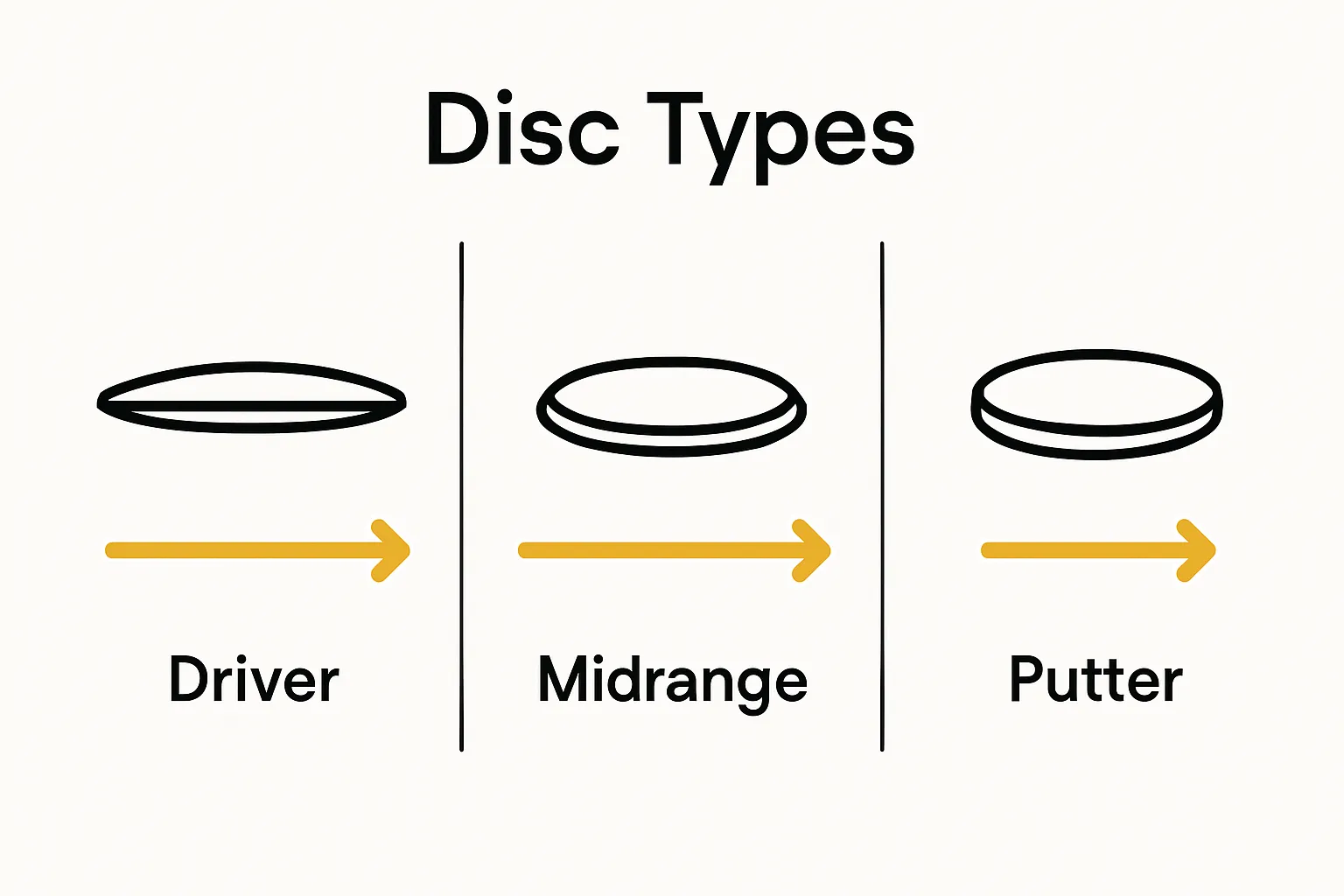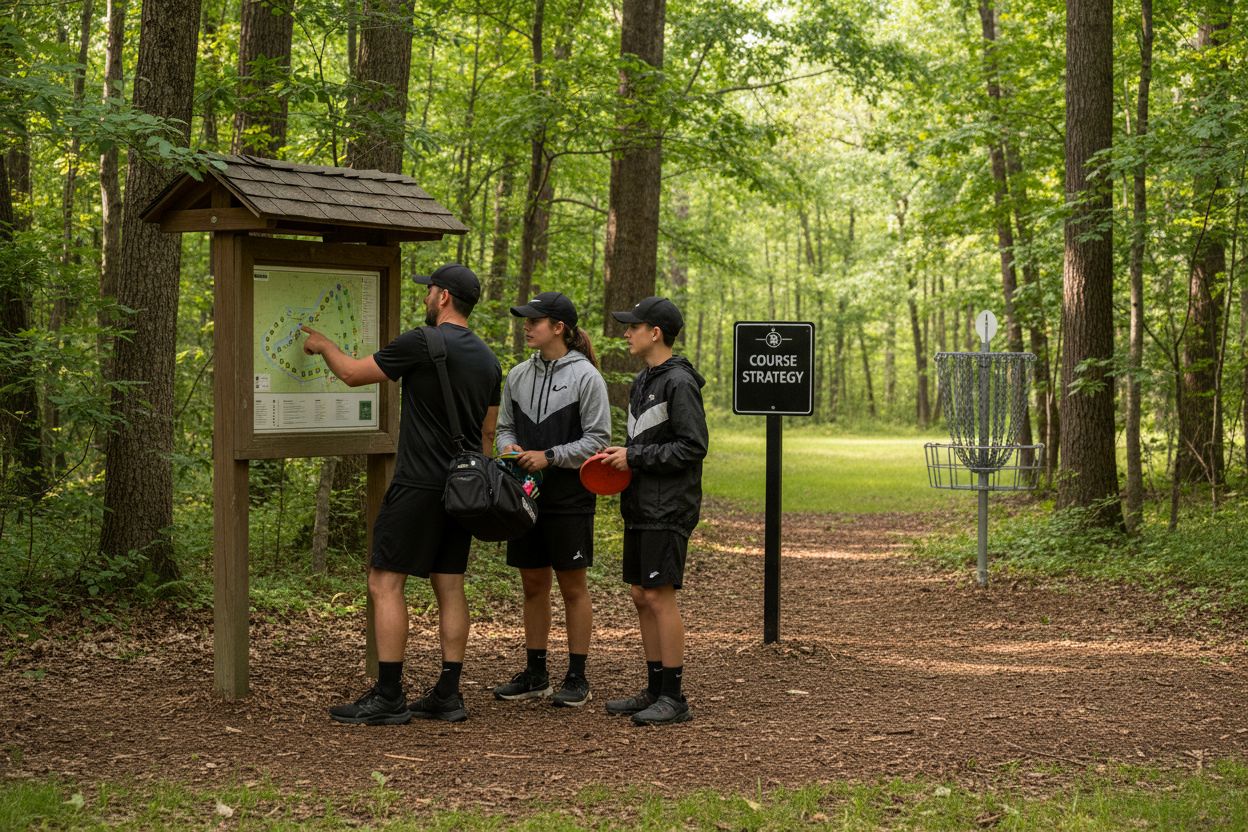
Understanding the Basics of Disc Golf for Everyone
Disc golf might sound like a backyard game with a frisbee and a couple of trees, but it is actually one of the fastest-growing sports in the world. Get this. Over 14,000 disc golf courses now exist globally, with new ones popping up every week. Most people still think of it as a casual hobby, but disc golf’s history and design run deeper than you might guess, blending precision, strategy, and surprising athleticism into every throw.
Table of Contents
- What Is Disc Golf And Its History?
- The Importance Of Disc Golf In Sports And Recreation
- How Disc Golf Works: Essential Rules And Concepts
- Types Of Discs And Their Uses In Gameplay
- Understanding Disc Golf Courses And Design
Quick Summary
| Takeaway | Explanation |
|---|---|
| Disc golf combines golf and frisbee techniques | Players aim to complete a course using specialized discs instead of traditional golf clubs and balls. |
| Accessible and inclusive for all ages | The sport is affordable and adaptable, making it suitable for children, adults, and seniors. |
| Disc types affect gameplay | Players use drivers, midrange discs, and putters, each tailored for different distances and throwing techniques. |
| Courses vary in complexity | Disc golf courses feature different terrains, obstacles, and hole designs that challenge players’ skills and strategies. |
| Promotes physical and mental wellness | Engaging in disc golf enhances fitness while fostering social connections and improving mental resilience. |
What is Disc Golf and Its History?
Disc golf is a unique outdoor sport that combines elements of traditional golf with the dynamic throwing techniques of frisbee. Similar to traditional golf, players aim to complete a course in the fewest number of throws possible, but instead of using clubs and golf balls, they use specialized flying discs to navigate through a series of target baskets.
The Origins of Disc Golf
The roots of disc golf trace back to the early 20th century, when informal versions of the game emerged. According to the Professional Disc Golf Association, the sport began taking its modern form in the 1970s, with players developing standardized rules and establishing dedicated courses. Early pioneers recognized the potential of transforming casual disc throwing into a structured competitive sport.
How Disc Golf Works
In disc golf, players start at a designated tee area and throw their disc toward a target basket, typically located several hundred feet away. Each course consists of multiple holes, usually between 9 and 18, with varying terrain and obstacles. Players select different types of discs based on the required throw and distance:
Below is a comparison table outlining the three main types of disc golf discs, highlighting their key uses and design features for different throwing scenarios.
| Disc Type | Typical Use | Key Features |
|---|---|---|
| Drivers | Long-distance throws | Maximum speed, sharp edges |
| Midrange Discs | Intermediate-range throws | Balanced control, moderate stability |
| Putters | Short, accurate throws near basket | High precision, slower flight |
- Drivers: Used for long-distance throws with maximum speed and distance
- Midrange Discs: Provide balanced control and accuracy for intermediate distances
- Putters: Designed for short, precise throws near the basket
Learn more about the growing popularity of disc golf and discover why this engaging outdoor sport continues to attract enthusiasts of all ages and skill levels. The game combines physical skill, strategic thinking, and an appreciation for nature, making it an appealing activity for those seeking an alternative to traditional sports.
The Importance of Disc Golf in Sports and Recreation
Disc golf has emerged as a significant recreational activity that offers unique benefits for physical fitness, mental well-being, and social interaction. Unlike many traditional sports, disc golf provides an accessible and inclusive environment for players of all ages and skill levels.
Physical Health and Fitness Benefits
Engaging in disc golf provides an excellent low-impact workout that combines cardiovascular exercise with precision skill development. Players walk considerable distances across varied terrain, typically covering 2-3 miles during a standard course, which promotes cardiovascular health and endurance. Research from physical fitness studies demonstrates that regular disc golf participation can improve overall physical conditioning, balance, and coordination.
Social and Mental Wellness Advantages
Disc golf is more than just a physical activity. It offers significant mental health benefits by providing opportunities for social connection and stress reduction. Players interact with friends and strangers in a relaxed, outdoor setting, building community connections. The sport requires strategic thinking, concentration, and problem-solving skills, which contribute to mental agility and emotional resilience.
Accessibility and Inclusive Recreation
One of disc golf’s most remarkable characteristics is its inclusivity. Discover the key benefits of this versatile sport that make it appealing to diverse populations. The equipment is relatively affordable, courses are often free to access, and the learning curve is gentle enough for beginners while still challenging for experienced players. Key advantages include:
- Low Cost of Entry: Minimal equipment required compared to many sports
- Age-Friendly: Playable by children, adults, and seniors
- Adaptable Difficulty: Courses can be enjoyed at personal skill levels
By combining physical activity, mental engagement, and social interaction, disc golf represents a holistic approach to recreational sports that promotes overall well-being and community connection.
The following table summarizes the core physical, mental, and social benefits of playing disc golf as described in the article, helping readers see the breadth of its positive impacts.
| Benefit Category | Description |
|---|---|
| Physical Health | Low-impact cardiovascular workout, improved balance and coordination |
| Mental Wellness | Reduces stress, builds concentration and problem-solving skills |
| Social Connection | Fosters community, encourages interaction in relaxed outdoor environment |
| Accessibility & Cost | Minimal equipment expenses, usually free course access, suitable for all ages |
| Skill Adaptability | Courses offer flexible difficulty for beginners and experienced players alike |
How Disc Golf Works: Essential Rules and Concepts
Disc golf follows a structured gameplay format that closely mirrors traditional golf, with players navigating a course by throwing specialized flying discs toward target baskets. Understanding the fundamental rules and gameplay mechanics is crucial for both beginners and experienced players seeking to enjoy the sport effectively.
Basic Gameplay Structure
According to the Professional Disc Golf Association, each disc golf course typically consists of 9 to 18 holes, with players attempting to complete the entire course using the fewest number of throws possible. Players start at a designated tee area and aim to land their disc in a target basket, which is marked with hanging chains designed to catch and hold the disc.
Scoring and Game Mechanics
Scoring in disc golf is straightforward. Each throw counts as a stroke, and the goal is to complete each hole with the lowest possible number of throws. Similar to traditional golf, players keep a running total of their strokes throughout the course. Penalties can be assessed for specific infractions, such as throwing outside a designated area or losing a disc.
Essential Game Rules
Learn more about disc golf rules with our comprehensive guide that helps players understand the nuances of gameplay. Key rules and concepts include:
- Throwing Order: The player with the lowest score on the previous hole throws first
- Lie Placement: Subsequent throws must be made from the spot where the previous throw landed
- Out of Bounds: Throws landing outside the designated playing area result in penalty strokes
The beauty of disc golf lies in its balance between structured rules and the natural, dynamic environment of outdoor courses. Players must adapt to varying terrains, wind conditions, and obstacles, making each round a unique strategic challenge.
Types of Discs and Their Uses in Gameplay
Disc golf requires specialized discs designed for different throwing techniques and course conditions. Understanding the characteristics and purposes of various disc types is crucial for players looking to improve their game and navigate diverse playing environments effectively.
Disc Categories and Specialized Designs
Research from disc golf equipment experts reveals that disc golf discs are categorized based on their intended flight characteristics and throwing purposes. The primary disc types include drivers, midrange discs, and putters, each engineered with unique properties to optimize performance in specific gameplay scenarios.
Flight Characteristics and Performance
Each disc type possesses distinct flight numbers that indicate speed, glide, turn, and fade. Speed ratings determine how fast a disc must be thrown to achieve optimal performance, while glide measures the disc’s ability to maintain altitude during flight. Experienced players carefully select discs based on these intricate flight characteristics to maximize their throwing efficiency.
Disc Selection and Gameplay Strategies
Explore the nuanced world of disc golf flight characteristics to enhance your gameplay understanding. Different disc types serve specific purposes
 :
:
-
Drivers: Designed for maximum distance and initial speed
-
Midrange Discs: Provide balanced control and accuracy for intermediate distances
-
Putters: Engineered for precision and short-distance accuracy near the basket
Successful disc golf players develop a comprehensive understanding of disc types, learning to select the right disc for each unique throwing situation and course challenge. Mastering disc selection becomes a critical skill in improving overall gameplay performance.
Understanding Disc Golf Courses and Design
Disc golf courses represent intricate landscapes that challenge players physically and strategically, transforming natural environments into complex playing fields. These carefully designed spaces blend terrain features, environmental considerations, and player skill requirements into unique recreational experiences.
Course Layout and Terrain Considerations
According to professional disc golf course designers, disc golf courses typically range from 9 to 18 holes, with each hole presenting distinct challenges. Terrain diversity plays a crucial role in course design, incorporating natural obstacles like trees, elevation changes, water hazards, and open spaces to create varied throwing opportunities that test players’ skills and disc selection strategies.
Technical Design Elements
Successful disc golf course design requires meticulous planning to balance difficulty, safety, and player enjoyment. Course designers must consider multiple factors including player skill levels, available land topography, environmental preservation, and potential interference with other recreational activities. Hole distances typically range from 200 to 500 feet, with professional courses offering more complex and challenging layouts.
Course Variations and Strategic Design
Explore the intricacies of disc golf course layouts and discover the strategic elements that make each course unique. Key design considerations include:
-
Basket Placement: Strategic positioning to create challenging throwing angles
-
Fairway Obstacles: Natural and constructed barriers that require precise disc control
-
Elevation Changes: Incorporating uphill, downhill, and side-hill throws to test player skills
The art of disc golf course design transforms ordinary landscapes into dynamic playing environments, challenging players to adapt their techniques and strategies to each unique hole and overall course configuration.

Ready to Start Your Disc Golf Journey? Get the Right Gear for Success
Learning the basics of disc golf is exciting, but choosing the correct discs and equipment can feel overwhelming. In the article, you discovered details about drivers, midrange discs, and putters, and how selecting the right tools makes a real difference in your gameplay. Many beginners want to improve faster, feel more confident on the course, and easily understand which discs match their needs.

Make your first throws count with gear built for every skill level. Visit golfdiscs.com and browse our full selection of beginner-friendly discs and essential equipment. Looking for more insight? See our guide to understanding disc golf flight numbers or check out the simple rules guide for players to boost your confidence. Start now and see how the right gear and knowledge can transform your disc golf experience.
Frequently Asked Questions
What is disc golf and how is it played?
Disc golf is an outdoor sport that combines elements of traditional golf with throwing specialized flying discs. Players aim to complete a course in the fewest throws possible, navigating from designated tee areas to target baskets using various types of discs.
What types of discs are used in disc golf?
Disc golf primarily uses three types of discs: drivers, midrange discs, and putters. Drivers are designed for maximum distance, midrange discs offer balanced control for intermediate distances, and putters are engineered for precision and short throws near the basket.
How does scoring work in disc golf?
Scoring in disc golf is straightforward: each throw counts as a stroke, and players aim to complete each hole in the lowest number of throws. Similar to traditional golf, players keep a running total of their strokes throughout the course, with penalties added for certain infractions.
What are the physical and social benefits of playing disc golf?
Disc golf offers numerous benefits, including a low-impact workout that promotes cardiovascular health, balance, and coordination. Additionally, it fosters social interaction and mental well-being by providing opportunities for players to connect with friends and interact in a relaxed outdoor setting.
